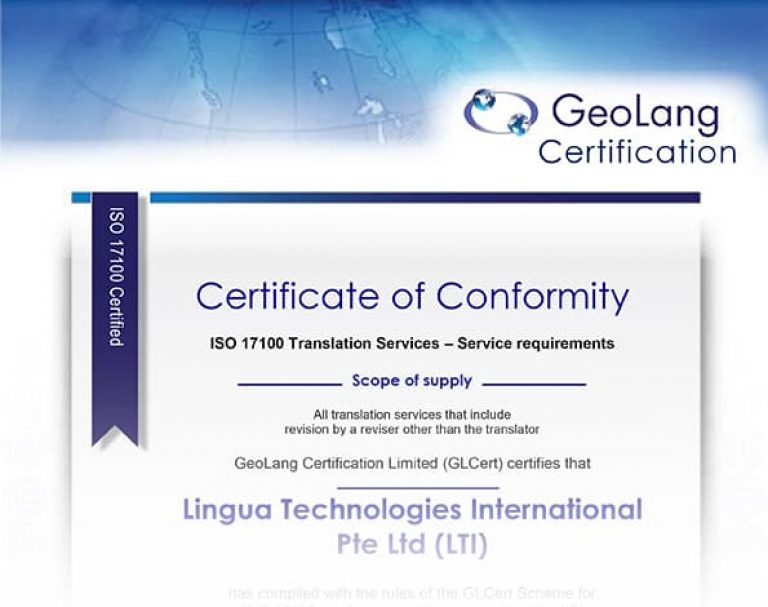What is ISO 17100 and what does it mean for a Translation Company?
Lingua Technologies International has achieved the ISO 17100 certification on the 12th September 2016.
How is this new certification going to affect you as our customers, and us, your language solutions provider?
To help you better understand the new ISO 17100, we will be giving you an insight into this new standard for the translation industry through our 4-part ISO 17100 series.
In this article, we will provide you with a brief history of ISO 17100 and what the certification is all about. The second article covers ISO 17100 in greater depth and explain how it is different from EN 15038, an existing European translation standard that was superseded by the former. Subsequent articles will talk about the differences between ISO 17100 versus other ISO standards claimed by other translation companies and finally, the impact that ISO 17100 on stakeholders (i.e. the clients and us).
What is ISO17100?
ISO 17100 specifies requirements for all aspects of the translation process, which are essential for the delivery of a quality translation service. By applying the standard, Translation Service Providers are able to effectively demonstrate their capability to ensure delivery of a quality translation service that meet client’s specifications.
Prepared by the International Standards Organization’s Technical Committee ISO/TC 37 and Subcommittee SC 5, work for ISO 17100 began as early as 2011, and was published on May 1, 2015.
The framework of ISO 17100 traces back to EN15038, which was a European standard for translation services released in 2006. Standards are subjected to review every five years, in order to amend the scope and conditions. As such, a review for EN15038 was scheduled in 2011. The review, however, was suspended as several national standards organizations intended on initiating an international standard and broadening the framework.
According to the Vienna Agreement between the International Standard Organization (ISO) and the European Committee for Standardization (CEN), every standard being issued should be at the highest international level. Therefore, this led to the publishing of ISO 17100, replacing EN 15038.
Other than defining terms and concepts related to the translation process and outlining its workflow, ISO 17100 also specifies the requirements for all parties involved in the process to possess certain competencies and qualifications. The following steps commonly applied by a Translation Service Provider in the translation process are of relevance to the international standard:
- Translation – Other than translating to its purpose, the translator also has to perform an overall check of his own work
- Editing – This is done by a separate qualified translator or an editor by performing a bilingual examination of the source and target language content for any errors and other issues
- Proofreading – A final monolingual proofread and application of corrections to ensure the flow of content between paragraphs and its suitability for the agreed purpose
- QA and Final Verification – A systematic QA process conducted by the trained Project Manager to confirm that all specifications of the project are met
- Review/Validation –The review includes assessing domain accuracy and applying specific terminologies (if not already provided at the start of the translation phase) or stylistic changes by the reviewer, usually provided as a form of a feedback by the client
… to be continued

